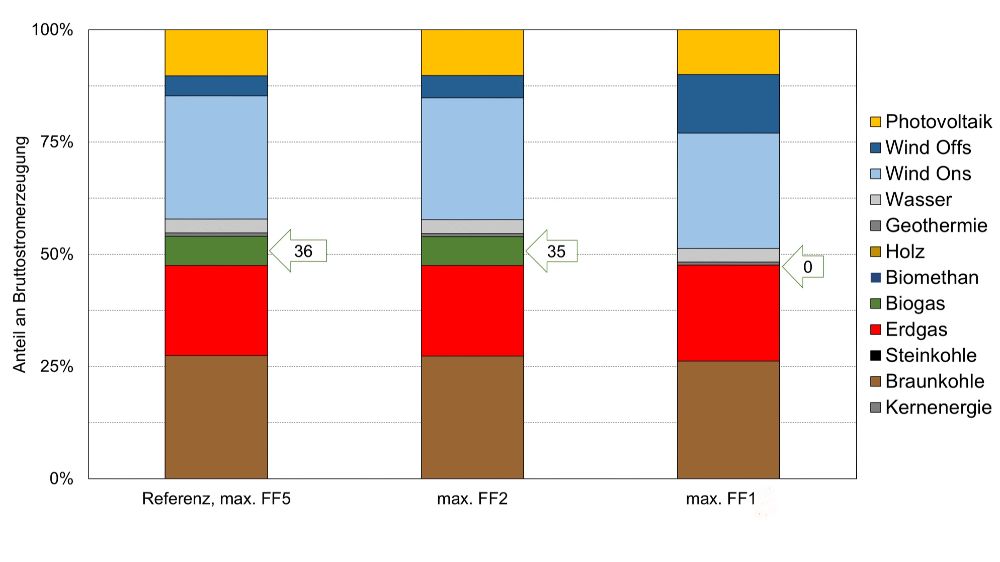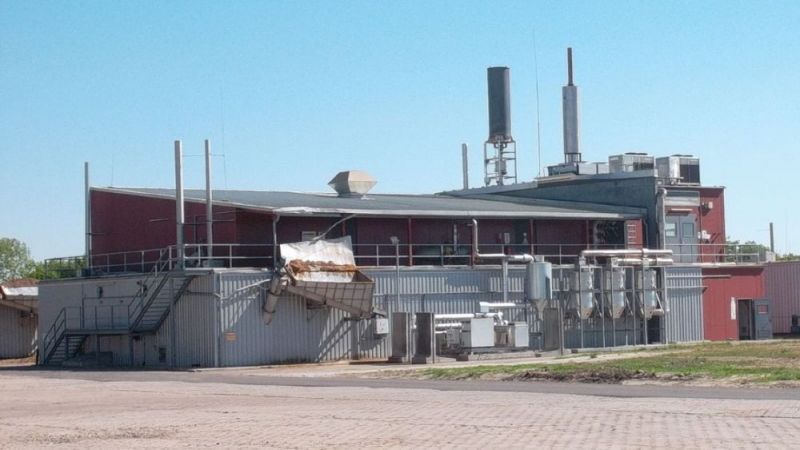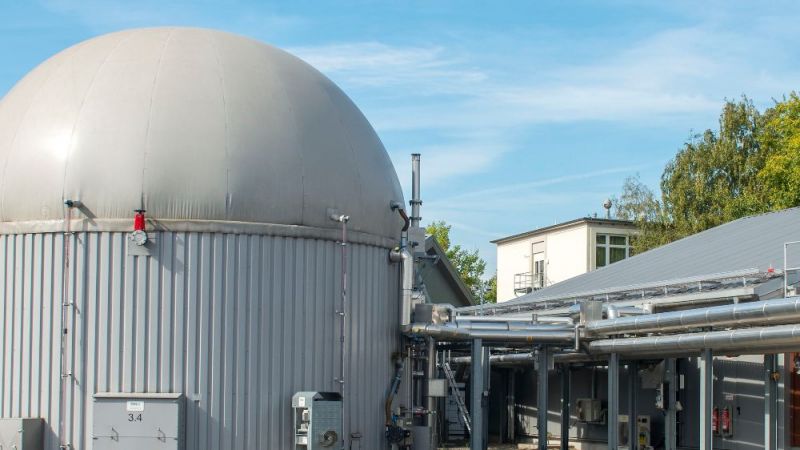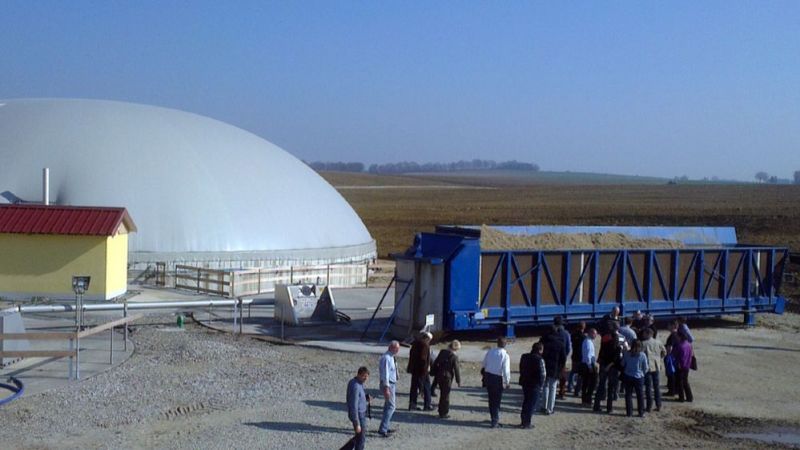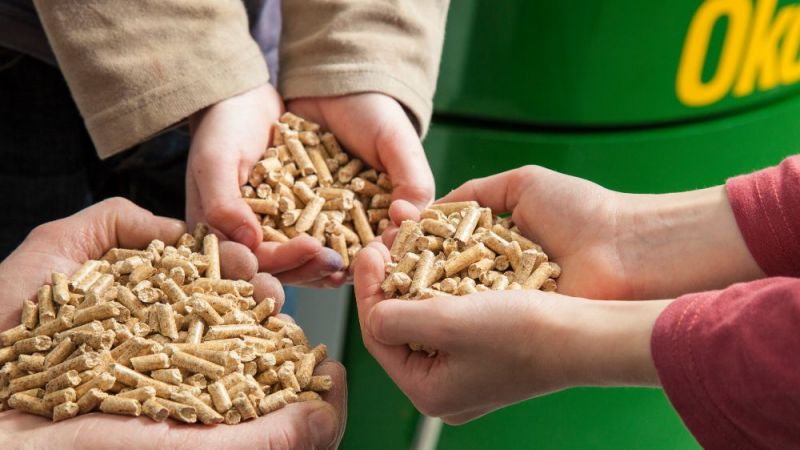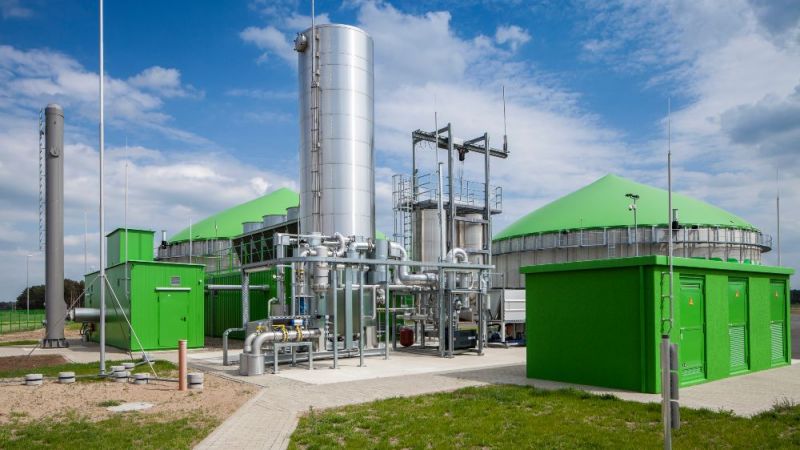Bioenergy
The role of bioenergy in the energy system
Bioenergy can be used flexibly – it is available as stored energy at any time of the day or year, regardless of weather conditions. This gives it a special role in the field of renewable energy sources. To fulfil this, it must be able to fit flexibly into a complex energy system. In the OptiSys project, scientists investigated how this property of bioenergy can be accurately mapped within the energy system. They analysed how different plant parameters of biogas plants affect the results of energy system models. The findings have been incorporated into the methods manual "Bioenergy as a Flexibility Option in the Energy System".
Bioenergy as a building block in the energy system
The expansion of renewable energy sources requires a new structure for the entire energy supply system. New technologies and operational concepts need to be integrated. Flexibility is one of the most important properties here - both in terms of technologies and the power plant fleet. Support here comes from various technologies, including storage tanks, power-to-X and flexible power plants. These different technologies must be coupled and intelligently integrated into the energy system. Aspects such as supply security, cost efficiency and environmental and climate protection are relevant here. Energy system models are used to optimally combine the available technical options.
However, the possibilities and properties of bioenergy to balance the fluctuating renewable energy sources and to operate flexibly are usually mapped in a simplified way. So far, questions about how bioenergy can best be integrated in terms of costs and how flexibility can best be utilised, also in terms of seasonal effects, are still insufficiently clarified.
Bioenergy in a coupled power-heat supply system
The OptiSys project, short for "Optimum share and system contribution of bioenergy in coupled electricity and CHP systems in Germany", aimed to describe the cost-optimal share of bioenergy in tomorrow's energy system and its determining factors. In the process, the project teams of the three participating research institutions considered not only the area of power, but also the heat and transport sectors.
As a basis, the scientists took into account the different technical solutions for providing energy from biomass. They intend to close the gap between "renewable energy system studies" and "bioenergy system studies" in this way. To this end, they mapped the spectrum of bioenergy technologies such as biogas plants, biomass CHP plants and biomethane CHP plants in technology clusters. They also took into account other technologies such as storage tanks, power-to-heat and conventional power plants.
For this purpose, they evaluated the system contribution and the influence of different properties of the technologies such as flexibility and availability of bioenergy plants. Using the electricity market model E2M2-Bio, they analysed sector coupling in the areas of electricity-heat and electricity-electromobility. Electricity market models include the essential aspects of electrical energy provision, generation, transmission and distribution as well as the framework conditions of the electricity market. These models play an important role both for the strategic planning of energy suppliers and for policy-making. The E2M2-Bio model of the University of Stuttgart maps the electricity and heat market in detail and was extended to include the mobility sector.
Biogas plants in energy system models
Biogas plants play an important role in a sustainable energy system, as they provide a large part of the renewable electricity and heat supply. They also contribute a renewable share to the transport sector. The value of flexibly deployable bioenergy in the power and heating system is increased by the large share of fluctuating solar and wind power.
The potential of biogas plants can be used to supplement solar and wind power and compensate for their fluctuating electricity generation, also known as "overbuilding". This refers to the increased output of CHP plants that convert biogas into power. If the share of renewable energy sources increases, the effect intensifies. Moreover, the potential has economic advantages. Biogas plants that can flexibly supply energy should therefore not be neglected in energy system analyses.
Bioenergy in the power and transport sector
Within the power sector, the role of bioenergy is mainly determined by how flexibly electricity can be produced. However, power can also be flexibly fed into the grid through electromobility and hydrogen production. It is therefore necessary to include every flexible technology option in an energy system model. This is the only way to make reliable statements about future development paths. Electromobility is thus in competition with other flexible options in the energy system, including biogas plants.
Biomass can only be used to a limited extent in the transport sector. This narrows the possibilities of using bioenergy in the electricity system in a balancing way. The role of bioenergy in the energy system is therefore also determined by the total demand for power. The different sectors of the energy and transport system and their capacities and properties are therefore interdependent. They should be mapped with sufficient precision in energy system studies.
Findings and methods for bioenergy modelling prepared under practical conditions
A key result of the OptiSys project is the handbook "Bioenergy as a Flexibility Option in the Energy System". This describes and analyses the role of bioenergy in energy system models in detail. It can now be used by other modellers to consider the central property of bioenergy, its flexibility, with sufficient precision. The method manual formulates both generally transferable findings and methods for bioenergy modelling and presents the specific assumptions from the "OptiSys" project.
Last update: 20.01.2022


